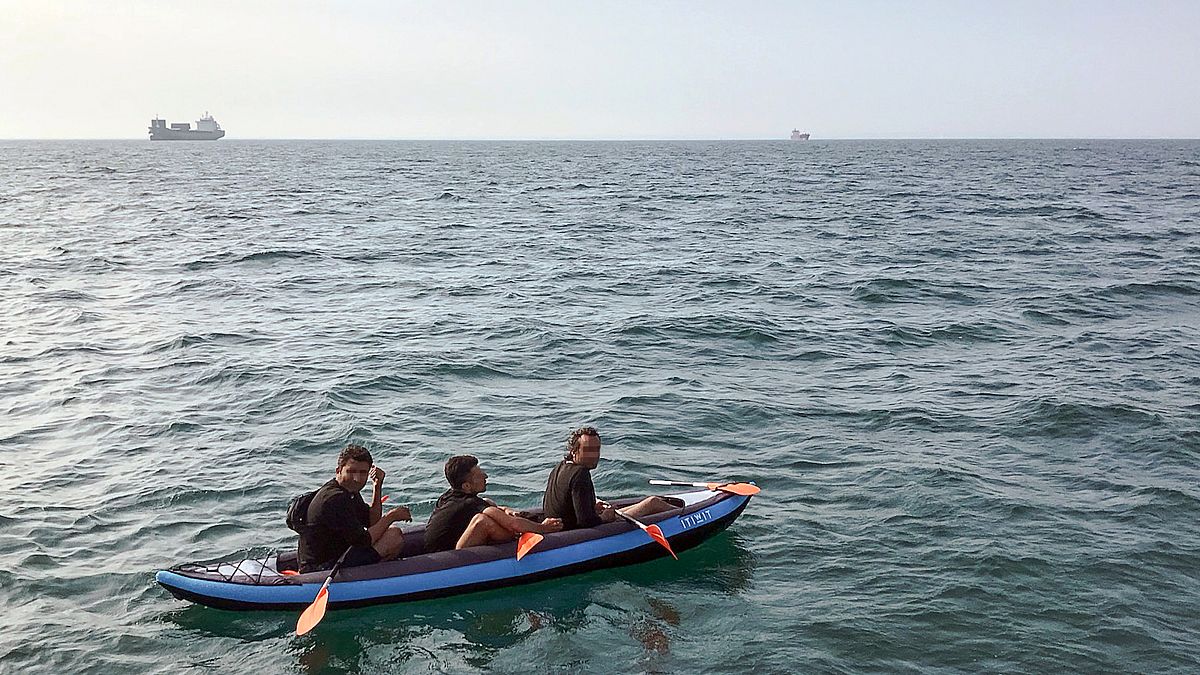'We don’t know where he started. We don’t know what his intentions were. We don’t know where he drowned.'
The only thing that is certain about Niknam Masoud’s journey to Britain is it how it ended.
On Friday 23 August, Masoud’s body was found floating in the water at the Thorntonbank wind farm off Belgium’s coast. The 47-year-old Iraqi was wearing a single swimmers’ flipper, a backpack and had plastic bottles strapped to his back as a crude flotation device.
“They called me and said they found a dead body,” Carl Decalwe, the governor of West Flanders, told Euronews. “This is the first time a dead body has been found in our waters. It’s very sad.”
It is believed that Masoud had been trying to reach the UK from France, a route that is becoming increasingly common as immigration policies harden across Europe. The crossings prompted Home Secretary Sajid Javid to announce a “major incident” in 2018.
A dangerous crossing
At its narrowest, the stretch of sea between the French and English coast is 33 kilometres. It may be a relatively short distance, but even in summer the strait is unpredictable and currents are strong. Even a strong swimmer in perfect conditions would struggle to make the journey.
“The crossing is dangerous due to the amount of shipping that uses the Channel, the currents, the poor weather conditions that often prevail, and the unsuitability of the crafts used,” Catherine Woollard, secretary-general at the European Council on Refugees and Exiles, told Euronews.
Belgian authorities do not know how long Masoud was in the water, or from where he left the European mainland, but he may have been the same man spotted in the water by a fisherman last week, prompting an unsuccessful search by the French coastguard.
The public prosecutors' office in Bruges, which has opened a file into Masoud’s death, also think he may have been one of two people spotted on a makeshift raft in French waters a few days earlier. If that is the case, a second person could still be still missing.
“It was a small thing they made themselves. They used plastic bottles to make it float,” a spokesperson at the prosecutors' office told Euronews.
Rejected asylum
One thing that is known about Masoud is that he had been in the German town of Karlsruhe since December 2018, after he was detained on a Thalys train from Belgium by the Aachen Federal Police. He requested asylum, was registered as an asylum seeker and transferred to Baden-Württemberg, Rosa Flaig, a Regierungspräsidium Karlsruhe spokesperson, said.
He was later refused asylum in Germany, the Bruges’ prosecutor’s office said, after missing a deadline to register.
In the absence of any information about his origins or his journey - even whether he was actually from Iraq or what part of the country he came from - prosecutors in Belgium have a difficult task on their hands.
“It is not easy to investigate. We don’t know where he started. We don’t know what his intentions were,” the spokesman said. “We don’t know where he drowned.”
